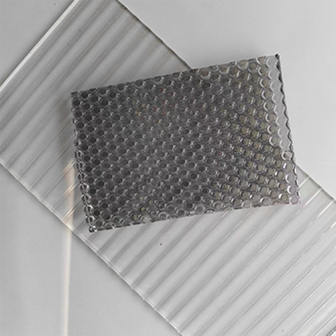Dec . 05, 2024 16:46 Back to list
Cost Analysis of Insulated Glass Panels for Your Next Project
Understanding the Cost of Insulated Glass Panels
Insulated glass panels, often referred to as double or triple glazing, are a popular choice for homeowners and builders alike, thanks to their energy efficiency, noise reduction, and aesthetic appeal. However, understanding the cost associated with these panels is essential for those considering them for their projects. This article will explore the factors influencing the cost of insulated glass panels, the average price range, and the financial benefits of investing in them.
What Are Insulated Glass Panels?
Insulated glass panels consist of two or more layers of glass separated by a space filled with inert gas, typically argon or krypton. This design significantly reduces heat transfer, making insulated glass an effective solution for energy conservation. The panels may come in various sizes and specifications, and they can be customized to suit specific needs.
Factors Influencing Cost
1. Type of Glass The type of glass used in insulated panels greatly influences the price. Standard clear glass is typically less expensive than tempered, laminated, or low-E glass, which offers enhanced thermal performance and solar control.
2. Thickness of Glass The thickness of the glass plays a role in cost. Thicker glass panels provide better sound insulation and durability but are more expensive. Standard thicknesses usually range from 1/8 inch to 1/2 inch, with thicker options available for specific applications.
3. Size of the Panels Larger panels are generally more costly due to the increased material and manufacturing requirements. Custom sizes will also incur additional costs, as they often require special fabrication.
4. Gas Filling The inert gas used between the panes affects insulation efficiency. Argon is commonly used and generally less expensive than krypton, which offers better insulating properties but at a higher cost.
5. Coatings and Treatments Low-emissivity (low-E) coatings can enhance the thermal performance of insulated glass but add to the overall cost. These coatings help reflect heat back into the home during winter and reduce solar heat gain in summer.
insulated glass panels cost

6. Frame Type The type of frame used in conjunction with insulated glass panels can impact the overall price. Vinyl, aluminum, and wood frames all have different price points, and each has distinct thermal properties.
7. Installation Fees The cost of installation should not be overlooked. Professional installation ensures proper sealing and insulation, which are crucial to achieving the desired energy efficiency. Geographic location and labor costs can also affect the overall installation price.
Average Cost
On average, the cost of insulated glass panels can range from $25 to $100 per square foot. While the price can vary significantly based on the factors mentioned above, homeowners can typically expect to pay around $30 to $60 per square foot for standard double-pane insulated glass. For higher-end options, such as triple glazing or custom sizes, prices can escalate to $100 or more per square foot.
Cost vs. Savings
While the initial investment in insulated glass panels can be substantial, the long-term savings and benefits should not be underestimated. By improving energy efficiency, insulated glass can significantly reduce heating and cooling costs. Homeowners can expect energy savings of 10% to 30% when replacing single-pane windows with insulated alternatives.
Additionally, insulated glass panels can increase the resale value of a home. Prospective buyers are often willing to pay a premium for energy-efficient upgrades, making insulated glass panels an attractive investment for those looking to sell their homes in the future.
Conclusion
Insulated glass panels may represent a notable initial expenditure, but considering their energy-saving potential, aesthetic appeal, and contribution to increased home value can make them a worthwhile investment. By understanding the various factors influencing the cost and comparing options, homeowners can make informed decisions that align with their financial and environmental goals. As demand for energy-efficient building materials continues to rise, insulated glass panels will likely remain a popular choice among homeowners and builders alike.
-
Safety and Style with Premium Laminated Glass Solutions
NewsJun.24,2025
-
Reinvents Security with Premium Wired Glass
NewsJun.24,2025
-
Premium Float Glass Line for Modern Architecture
NewsJun.24,2025
-
Low Emissivity Glass for Energy-Efficient Architecture
NewsJun.24,2025
-
High-Performance Insulated Glass Solutions for Modern Architecture
NewsJun.24,2025
-
Elevates Interior Style with Premium Silver Mirror
NewsJun.24,2025
Related PRODUCTS














